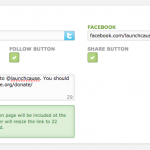5 Ways to Sustain High-Quality Social Care
— December 8, 2017

geralt / Pixabay
So, you’ve developed your company’s first dedicated social customer service team—congrats! Now how do you keep it going?
As with all things new, the honeymoon phase will end and you’ll need a robust process to keep it all together. Teams grow, channels change, and best practices—like consumer expectations—evolve faster than ever. Just five years ago, social support was barely a consideration and now 54 percent of customers prefer it over phone or email. And only over the past two years have messaging apps risen to support prominence.
Here are a few ways to keep your support fresh and maintain your current momentum.
5 ways to sustain high-quality social care:
1. Share performance data with your agents
Make success a team effort: share performance data with your agents and include them in brainstorming fixes. For example, if first response times (FRT) are high, examine when those spikes occur. Can you staff to accommodate them? What about average handling times, or CSAT? Do your agents have ideas?
Remember that your agents live on the front lines and may have unique insights that you do not. For instance, agents might note that CSAT survey response rates are low because of the time lag from sending the follow-up message. Or they might notice that adding their initials to tweets improves NPS because customers immediately warm up when they realize they’re dealing with a human. Use data to solicit agent ideas and turn your social care system into a self-sustaining feedback loop.
2. Use bots to help scale social
Because the barrier to contact on social media is lower than legacy channels, companies can see a spike in ticket volume without a corresponding increase in actual issues. Help your agents find the signals among the noise by filtering and deflecting non-essential inquiries with self-service bots.
Self-service bots can dramatically reduce agent workload and improve resolution metrics. They respond instantly, improving FRT, and because they are vastly more intelligent and resilient than interactive voice recordings (IVRs), they can resolve many simple inquiries on the spot. When they can’t resolve an issue, they can suggest FAQ pages in-channel or escalate to an agent.
And if you’re concerned that your NPS will suffer, worry not. As many as half of all tickets are ‘routine’ and can be handled by bots, and 27 percent of consumers can’t distinguish between them and a human being.
3. Promote from within
While hiring from within is not always an option, it should be your preference. Internal hires come pre-loaded with volumes of intangible but immensely valuable tribal knowledge that often takes new hires much longer to accumulate. They already know your brand’s people, processes, and terminology, and they can shortcut straight to learning the nuances of social care.
At many organizations, social care teams poach top talent from the legacy contact center. It’s okay to position this as a promotion.
4. Identify which channels need the most help
Social media is a catch-all term that hides a surprising degree of variety and complexity. What works for live chat doesn’t work for social, and what works for public doesn’t work for private. Collect data and benchmark yourself on your team’s success in each channel and periodically refocus agent training in those areas where you appear to be slipping.
5. Revamp your social care playbook
Continued learning is key for customer service agents. As your product strategy and marketing message evolve, so should your agents. Keep your playbook up to date and empower senior agents to lead training sessions to ensure the information being shared isn’t growing stale. Encourage those senior agents to highlight and update sections of the playbook that aren’t aging well and add these revisions to their criteria for promotion.
Everything is an opportunity to improve
While a post-honeymoon phase downtick in CSAT or FRT can at first seem demoralizing, don’t despair. Customer happiness is a journey, not a destination, and with the right processes in place, negative data makes your support even stronger.
Digital & Social Articles on Business 2 Community
(24)







